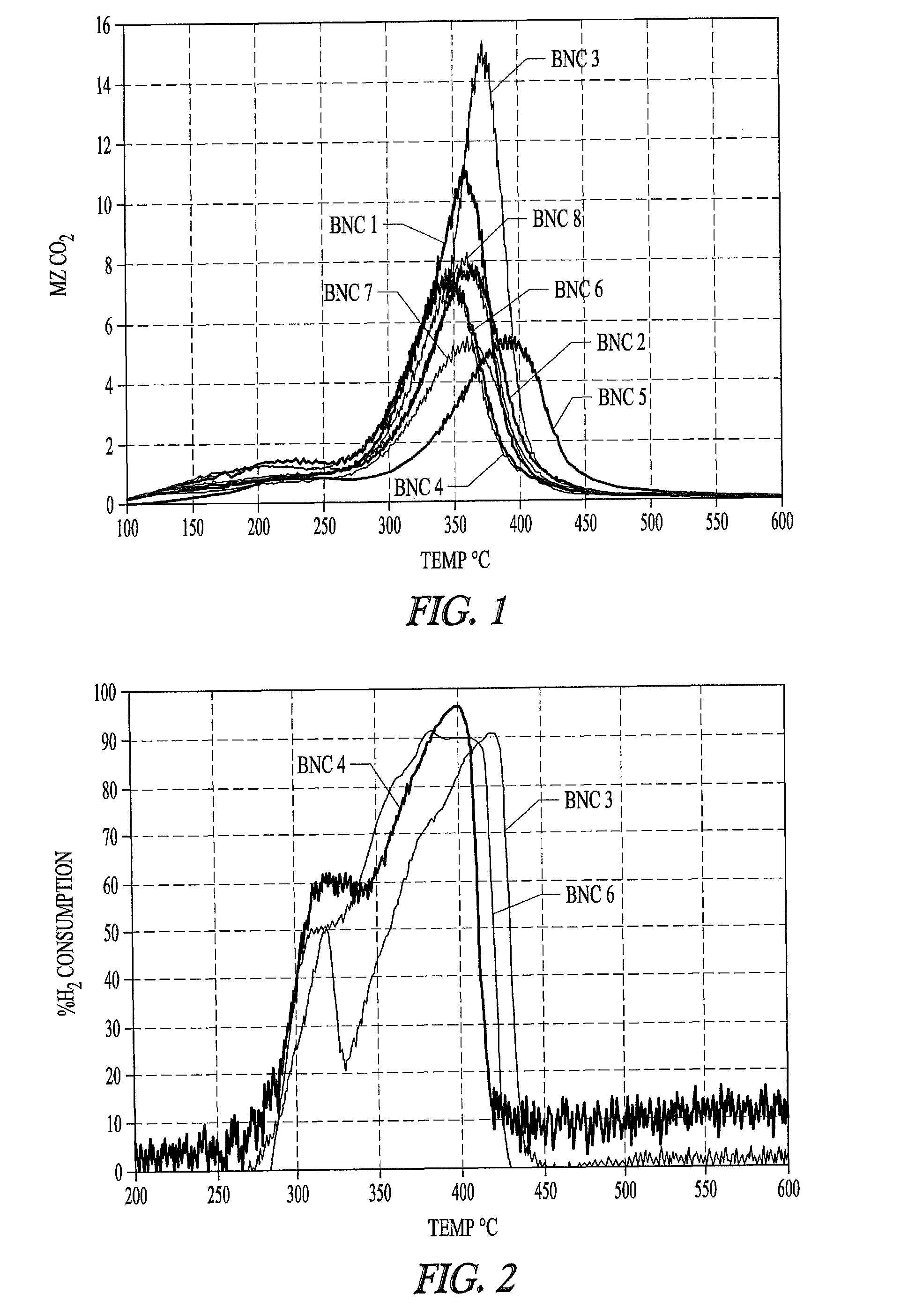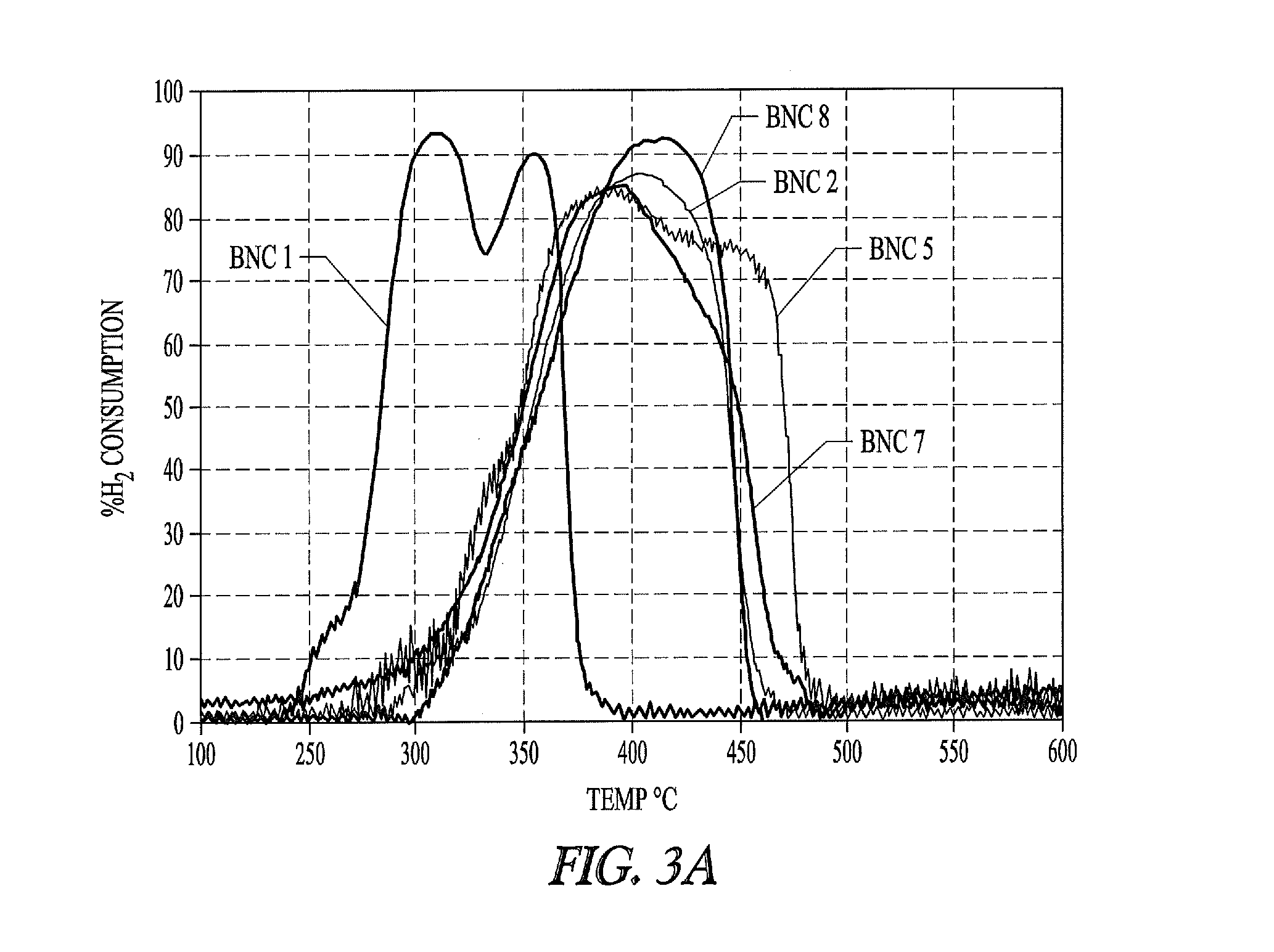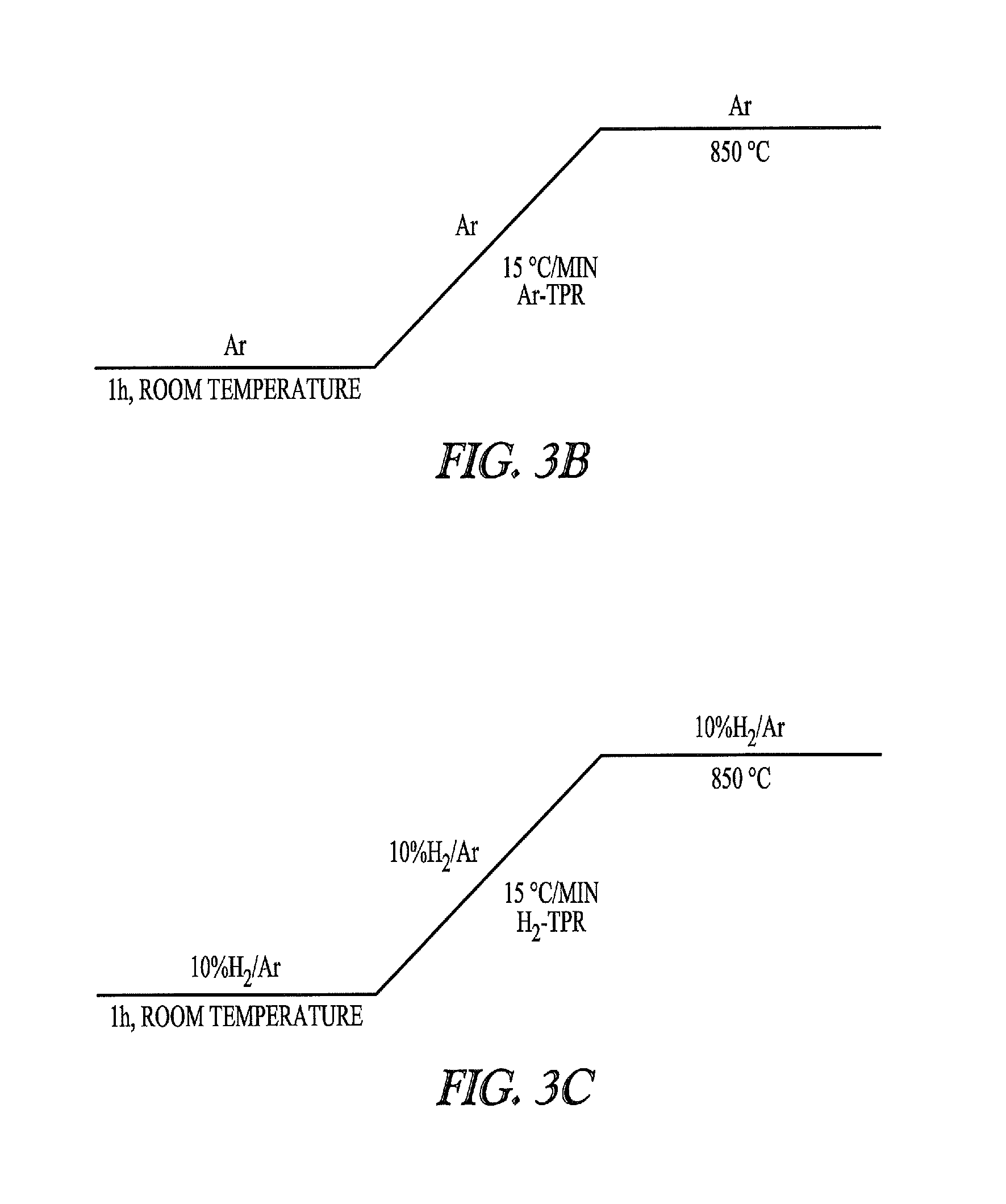Nickel form for preparation of catalytic nickel-ligand complexes
a nickel-ligand complex and nickel-ligand technology, which is applied in the field ofnickel metal catalyst systems, can solve the problems of poor ligand complexation activity of nickel particles and inadequate physical properties
- Summary
- Abstract
- Description
- Claims
- Application Information
AI Technical Summary
Benefits of technology
Problems solved by technology
Method used
Image
Examples
example 1
Assays for Nickel-Ligand Complex Formation and Ni & S Content
[0314]This Example describes assays employed to evaluate the activity of nickel metal samples for forming a complex with phosphorus-containing ligands, as well as assays to determine the content of nickel and sulfur in various basic nickel carbonate, nickel oxide, nickel metal etc. samples.
[0315]To evaluate the suitability of nickel preparations for generating hydrocyanation catalysts, the nickel is mixed with a phosphorus-containing ligand (e.g., Ligand (V)) in a 3-pentenenitrile (3PN) solution and warmed for a period of hours and the level of solubilized nickel in solution is measured by liquid chromatography (LC) over time in the assay described below. In general, the goal is to identify nickel preparations that form complexes with phosphorus-containing ligands at a rate suitable for use in a manufacturing process involving a hydrocyanation catalyst. For example, a suitable nickel preparation forms sufficient nickel-lig...
example 2
Nickel Activity Varies with BNC Sample Type
[0338]Eight basic nickel carbonate (BNC) samples are evaluated for suitability in preparing Ni metals. All samples tested are commercial products with the exception of BNC #5, which is prepared according the BNC precipitation procedure described above. As described below different particulate nickel metal preparations made from different BNC sources exhibit variability in complex formation with phosphorus-containing ligands.
[0339]Table 1 (above) and Table 2 provide analytical data concerning trace impurities in the BNC samples. All percentage and parts per million (ppm) values are weight:weight (w / w), unless otherwise stated.
[0340]
TABLE 2Samples of Basic Nickel Carbonate Evaluatedfor Preparation of Inventive Ni FormNi:CNi:CBNCCHNSClNickelCO32−WtMoleNo.%%%ppmppm%%RatioRatio13.93.30.092121342.0819.510.792.2124.620.081902350.712311.022.2636.42.20.025945.33327.081.4544.82.4746.19249.621.9754.52.121000751.5722.511.462.3565.62.410245.53288.131.66...
example 3
BNC Physical and Chemical Properties
[0350]“Ni active” samples 2, 5, 7, and 8 described in Example 1 are further evaluated and compared to samples 3, 4 and 6 that do not have sufficient active nickel for efficient formation of nickel phosphorus ligand complexes, and that have larger crystallite mean size than the active samples.
Analytical Procedures—Methodology
TP-XRD Measurements
[0351]A Siemens Bruker D5000 diffractometer with Anton Paar HTK heating stage is used. The BNC specimens are mounted as a dry compacted layer on a platinum (Pt) foil, itself attached to an electrically heated Pt bar. A gas flow of 4% H2 / N2 is used.
[0352]A pre-heating scan at room temperature is obtained from the starting material; this also allows the system to flush fully with H2 / N2. Following the heating profile a room temperature scan of the product is obtained for reference.
[0353]The following measurement conditions are used.
[0354]
DiffractometerSiemens / Bruker D5000 D7X-ray TubeCu LFFRadiationCu KαGenerato...
PUM
| Property | Measurement | Unit |
|---|---|---|
| size | aaaaa | aaaaa |
| crystallite size | aaaaa | aaaaa |
| size | aaaaa | aaaaa |
Abstract
Description
Claims
Application Information
 Login to View More
Login to View More - R&D
- Intellectual Property
- Life Sciences
- Materials
- Tech Scout
- Unparalleled Data Quality
- Higher Quality Content
- 60% Fewer Hallucinations
Browse by: Latest US Patents, China's latest patents, Technical Efficacy Thesaurus, Application Domain, Technology Topic, Popular Technical Reports.
© 2025 PatSnap. All rights reserved.Legal|Privacy policy|Modern Slavery Act Transparency Statement|Sitemap|About US| Contact US: help@patsnap.com



